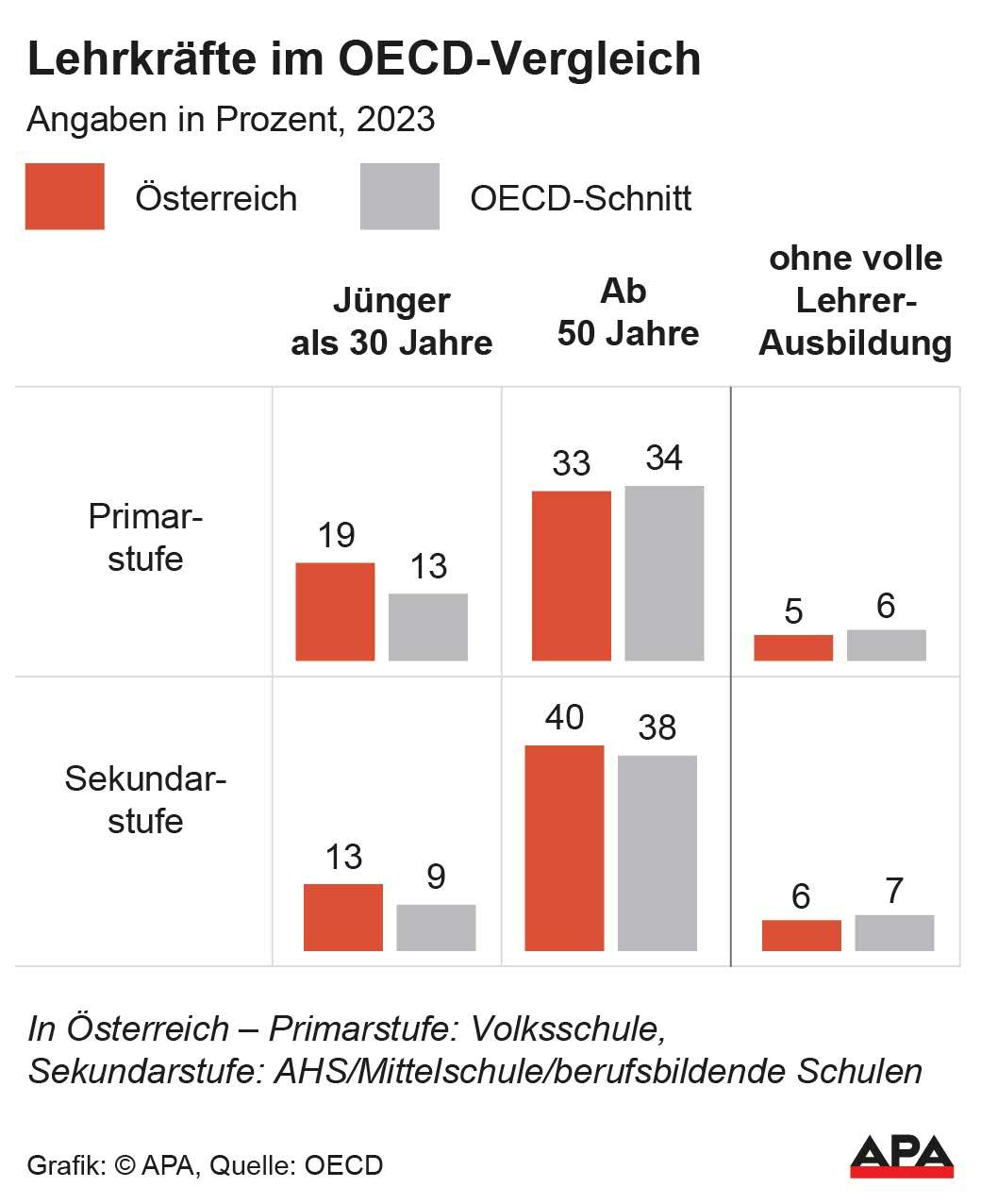Percentage of Teachers Without Traditional Teacher Training Increases
While in the 2014/15 school year, 1.2 percent in primary schools and 3.1 percent in secondary education (mainly middle schools, AHS, BMHS) were student teachers or career changers, in the 2022/23 school year, the year with the greatest teacher shortage in the period under consideration, it was 5.3 percent and 6 percent, respectively.
OECD Education Director Schleicher: "Initial training is often overestimated"
For OECD Education Director Andreas Schleicher, this trend is not a problem as long as quality assurance is in place. However, it is important to select suitable individuals and support them well through further training and assistance as they enter everyday teaching. "I believe initial training is often overestimated," he said on the sidelines of a presentation of the study results on Monday evening in Vienna. "The advantages of career changers outweigh." In England, for example, schools now prefer to choose career changers when selecting teachers.

In the primary school sector, career changing is more difficult because it requires more pedagogical and less expert knowledge, according to Schleicher. "Nevertheless, there are many people who are very successful as career changers here." In Austria, career changing is currently only possible in secondary education. However, Education Minister Christoph Wiederkehr (NEOS) plans to extend this to primary schools, with a pilot project underway in Vienna since this school year.
Teaching staff is getting younger again
Schleicher sees a need for action overall in supporting new teachers, as among those educators who resigned in the 2022/23 school year, more than half (primary school) and almost two-thirds (secondary education) had been in the profession for less than five years. Apparently, there is still too little support to introduce newcomers well into everyday school life after their university education, which is often far removed from practice.
Meanwhile, the wave of retirements and more new teachers are making Austria's teaching staff younger again. Between 2013 and 2023, the proportion of teachers under 30 has increased in both primary and secondary education (mainly middle schools, AHS, BMHS) (from 12 to 19 and from 7 to 13 percent, respectively). At the same time, there are now fewer teaching staff over 49 years old (primary school: decrease from 37 to 33 percent, secondary education: from 46 to 40 percent).
(APA/Red)
This article has been automatically translated, read the original article here.





